[ad_1]
If you wish to know the way I exploit Lightroom Earlier than and After performance in my images and the way it helps me visualize my edits, it’s worthwhile to learn this tutorial.
To make use of Lightroom earlier than and after function, soar to the Develop module first and use the “” keyboard shortcut to preview the unedited model of the chosen picture. Finally, you press ‘Shift+Tab” first to cover enhancing panels after which hit the “” key to make use of the earlier than and after in unobstructed full-screen mode.
If you happen to ask me concerning the Lightroom instrument or perform that I exploit most frequently, you’ll be shocked by my reply. It isn’t Break up Firming or Panorama Merging, neither is it a preset performance. The obscure Earlier than and After function is my reply.
I’m not saying it’s the most helpful or essentially the most thrilling instrument, however it’s the instrument I exploit most frequently throughout enhancing.
If you shoot in RAW format, the pictures straight from the digicam aren’t very thrilling or interesting. By design, RAW photographs are low in distinction and saturation; the collected uncooked information should be processed first.
The transformation from the unique RAW seize to the ultimate, ready-for-publishing picture might be drastic. I discover it’s straightforward for me to get carried away and overprocess a picture when working in Lightroom.
See additionally: How one can Duplicate Picture in Lightroom
That’s the place the Earlier than and After function comes into play. The perform serves as a actuality test and helps be sure that I’m on the appropriate enhancing observe. When I’m within the strategy of enhancing, particularly when enhancing a photograph that has the potential of turning into a portfolio piece, I exploit the Earlier than and After perform each jiffy.
There are various other ways of utilizing Earlier than and After in Lightroom, however I solely recurrently use the perform in two particular methods.
Utilizing Lightroom Earlier than and After Characteristic
In at present’s article, I’ll present you ways I exploit Earlier than and After in Lightroom and the varied different methods you should use the perform in your enhancing workflow.
1. Earlier than Solely
That is the only method of displaying the unique, unedited state of the chosen picture.
Hit the “” key in your keyboard, and the chosen picture is changed with an unedited model of the identical picture.
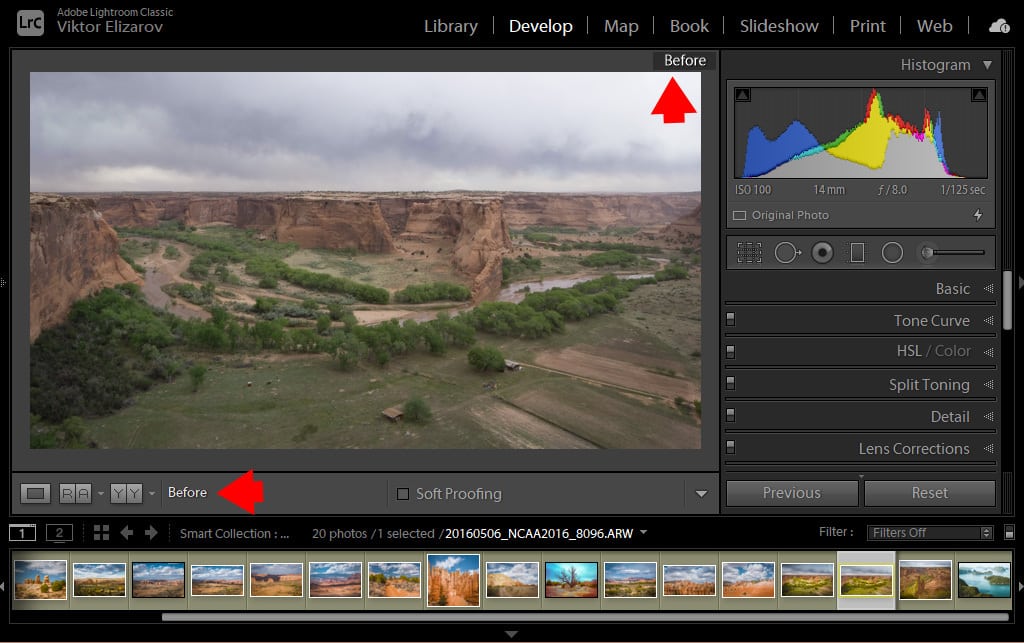

This doesn’t change the Crop Overlay changes; the picture within the “Earlier than” state has the identical dimensions.
By hitting the “” key as soon as extra, the picture is changed with the presently edited model.
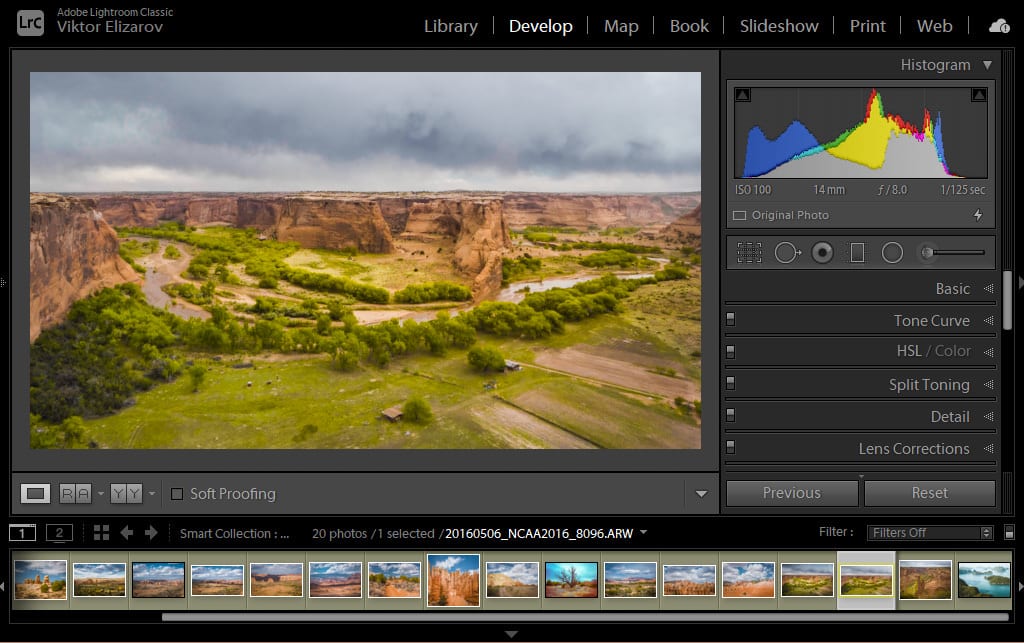

I sometimes hit the keyboard shortcut 4 to five instances earlier than deciding on my enhancing–if I have to dial it down or push my enhancing even additional.
Here’s a variation of the identical methodology that I usually use.
I discover that one of many most helpful shortcuts in Lightroom is the “Full Display screen” shortcut. By urgent the “F” key, the chosen picture goes into full-screen mode and covers the whole monitor. I usually use this instrument to judge the edited picture in a view unobstructed by the Lightroom consumer interface (UI).
Sadly, the “Earlier than Solely” function doesn’t work in full-screen mode. If you use the “” key in full-screen mode, it instantly goes again to the usual Lightroom interface.
Right here is how I work round this limitation:
First, I exploit the “Shift + Tab” shortcut to inform Lightroom to cover all its panels (high, backside, left, and proper). This maximizes the UI actual property for the chosen picture.
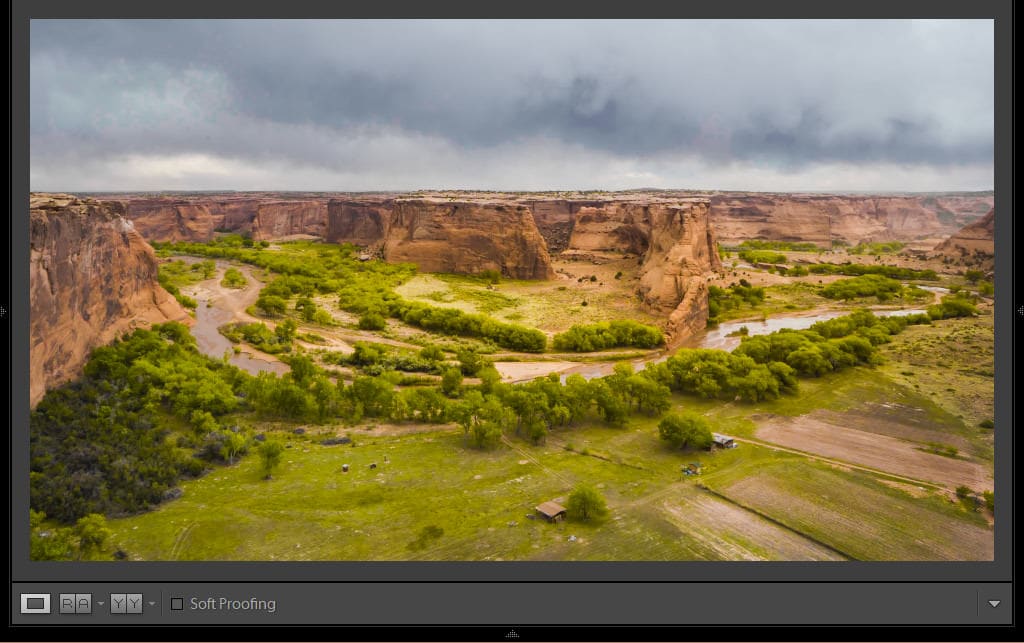

Subsequent, I exploit the “” key to show the unedited model of the chosen picture.
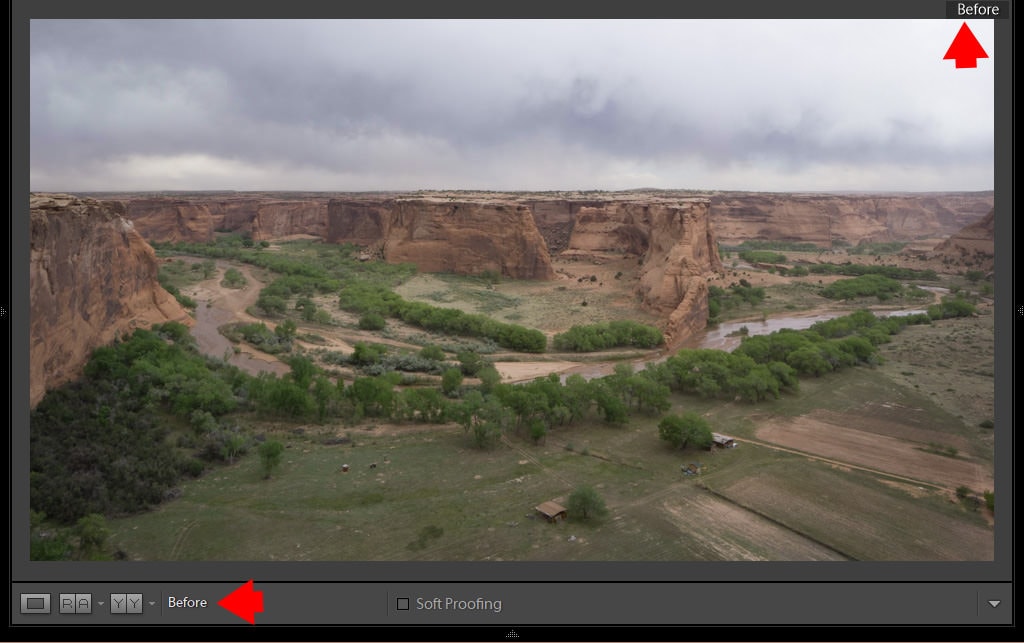

2. Earlier than and After with Snapshot Panel
I discover that the Snapshot Panel is an underappreciated and underutilized function in Lightroom. I do know {many professional} photographers who by no means use it.
I like the Snapshot instrument and use it with practically each picture I edit in Lightroom.
Snapshot lets you save any enhancing occasion from the Historical past Panel as a snapshot.
Let me present you ways my Snapshot Panel appears for certainly one of my processed images.
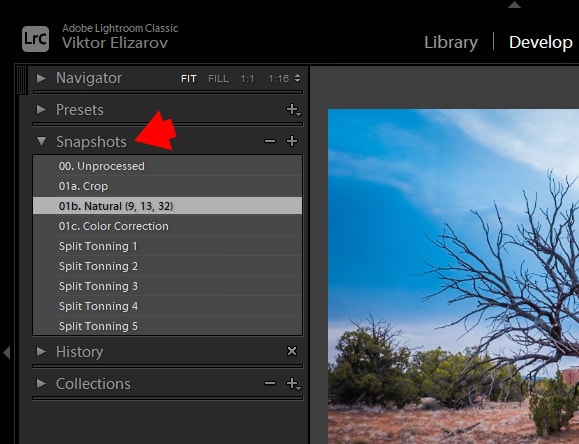

00. Unprocessed – I created the Snapshot or occasion of an unprocessed RAW picture at the start of my enhancing.
01a. – I used the Crop Overlay instrument to enhance the composition by making it a bit tighter. Then, I created one other Snapshot.
01b. Pure – The Snapshot tells me that I used the Pure preset and three changes from the TOOLKIT.
01c. Colour Correction – I created the subsequent Snapshot after I used the Lightroom enhancing sliders for handbook coloration correction. I desaturated the sky space and emphasised the vegetation areas.
Lastly, I created 5 extra Snapshots for 5 enhancing variations that I made utilizing the Break up Firming Panel in Lightroom.
The Snapshot setup permits me to leap to the unique, unedited model of the picture and the varied intermediate states through the enhancing course of.
One other advantage of the Snapshot instrument is that after I open the identical picture later, even months or years into the long run, it’s going to assist me higher perceive the practice of thought current through the enhancing course of.
As I discussed earlier than, the Snapshot Panel is a vital a part of my Lightroom enhancing workflow.
Subsequent, I’ll present you a couple of different methods to make use of Lightroom’s Earlier than and After perform. Though I don’t use these strategies usually, they are often helpful generally.
Lightroom has a whole Earlier than and After perform you could entry via the UI, keyboard shortcuts, or the principle menu.
3. Earlier than and After Left/Proper
If you wish to show the present enhancing state of the picture subsequent to the unedited model in a side-by-side comparability, listed here are your choices:
a. Use the “Y” shortcut.
b. Click on the YY icon beneath the picture.
c. Use the highest menu View > Earlier than/After > Left Proper.
I discover this explicit view to be essentially the most helpful. However the side-by-side view might be too small for correct analysis once you edit images within the panorama orientation.
In these cases, use the trick I outlined above.
- Use the “Shift + Tab” shortcut to cover all of the panels in Lightroom and maximize the UI.
- Subsequent, use the “Y” shortcut to entry the Earlier than and After side-by-side view.


4. Earlier than and After Left/Proper Break up
The break up view is a variation of the Left/Proper choice, however as a substitute of two photographs displayed side-by-side, one picture is break up in half with the unedited half of the picture on the left and the present, edited half of the picture on the appropriate.
a. Use the “Shift + Y” shortcut.
b. Choose the “Earlier than/After Left/Proper Break up” choice beneath the YY icon.
c. Use the highest menu View > Earlier than/After > Break up.
I by no means discovered this break up view to be very helpful, however this selection is obtainable if you happen to want it.
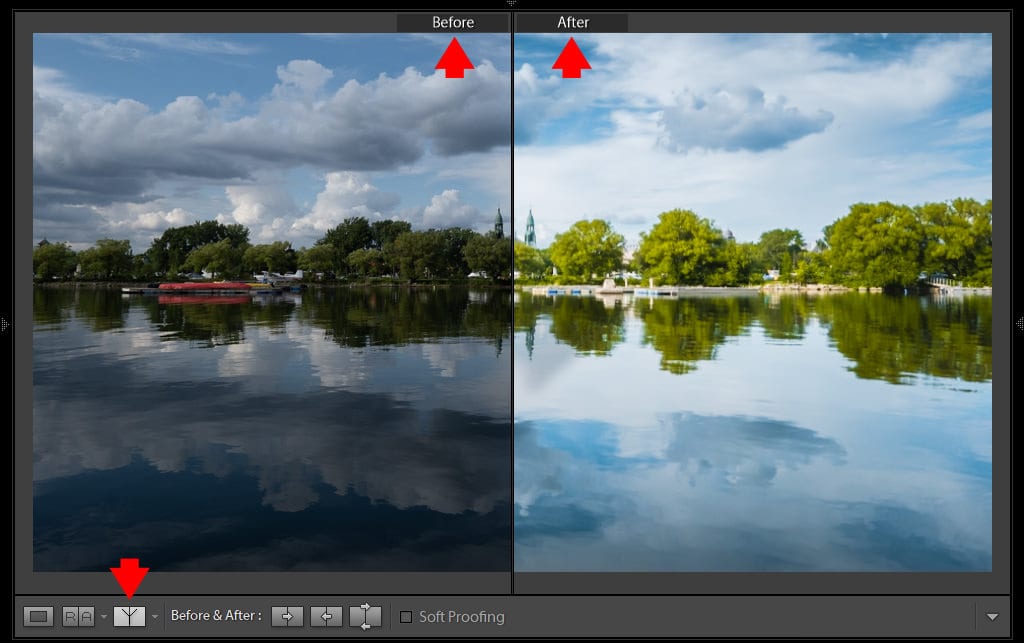

5. Earlier than and After High/Backside
Right here is one other variation of the side-by-side choice however with the pictures displayed in a vertical orientation from high to backside.
a. Use the “Alt + Y” shortcut.
b. Choose the “Earlier than/After High/Backside” choice beneath the YY icon.
C. Use the highest menu View > Earlier than/After > High/Backside.
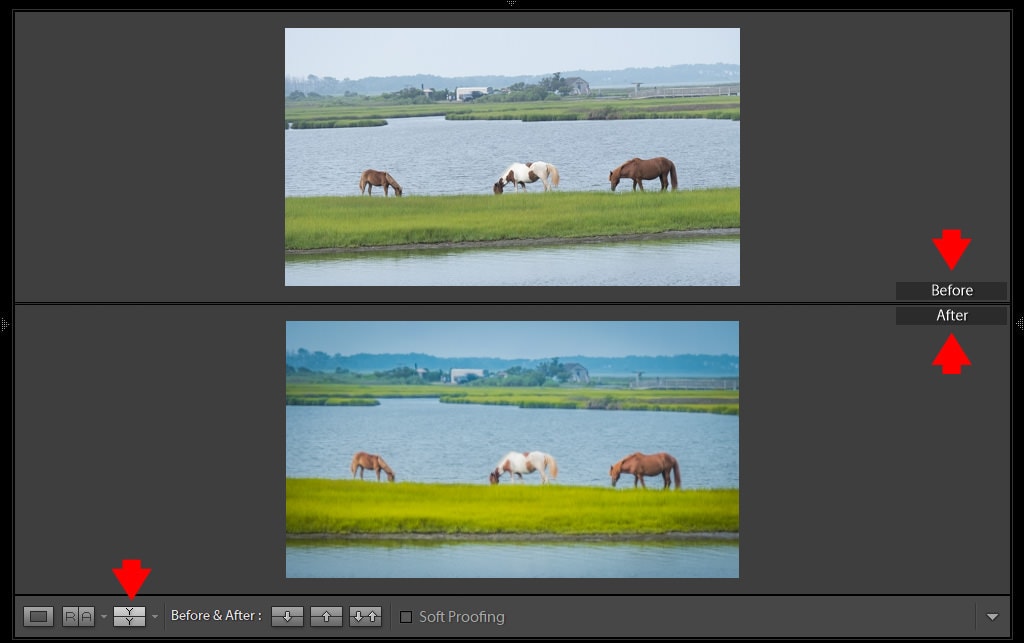

6. Earlier than and After High/Backside Break up
This is identical thought because the Left/Proper Break up, however the break up is positioned horizontally.
See additionally: Luminocity Masking in Lightroom
a. Use the “Alt + Y” shortcut to entry the highest/backside view. Then, swap to separate utilizing the “Shift + Y” shortcut.
b. Choose the “Earlier than/After High/Backside Break up” choice beneath the YY icon.
C. Use the highest menu View > Earlier than/After > Break up.
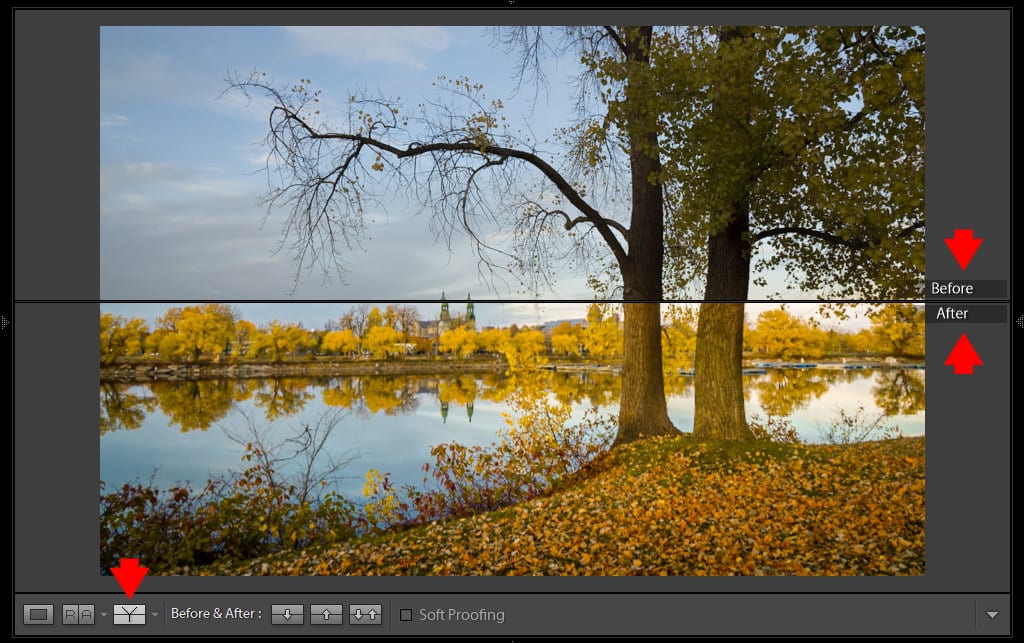

Extra Choices
By default, the “Earlier than” state is displayed on the left when utilizing the side-by-side format (or on the high within the top-to-bottom format). You may swap the Earlier than and After default show choices utilizing:
a. The Swap View icon beneath the picture.
B. “Ctrl + Alt + Shift + Arrow Up” (“Cmd + Possibility + Shift + Arrow Up” on Mac).


If you use any of the Earlier than and After choices, the default view shows the unique, unprocessed picture with the present edited model. However you aren’t restricted to solely the default views.
See additionally: How one can Use Histogram in Lightroom
If you open the Historical past Panel and drag any of the enhancing steps from the Historical past Panel to the Earlier than picture, the default unprocessed view adjustments to the chosen enhancing step.
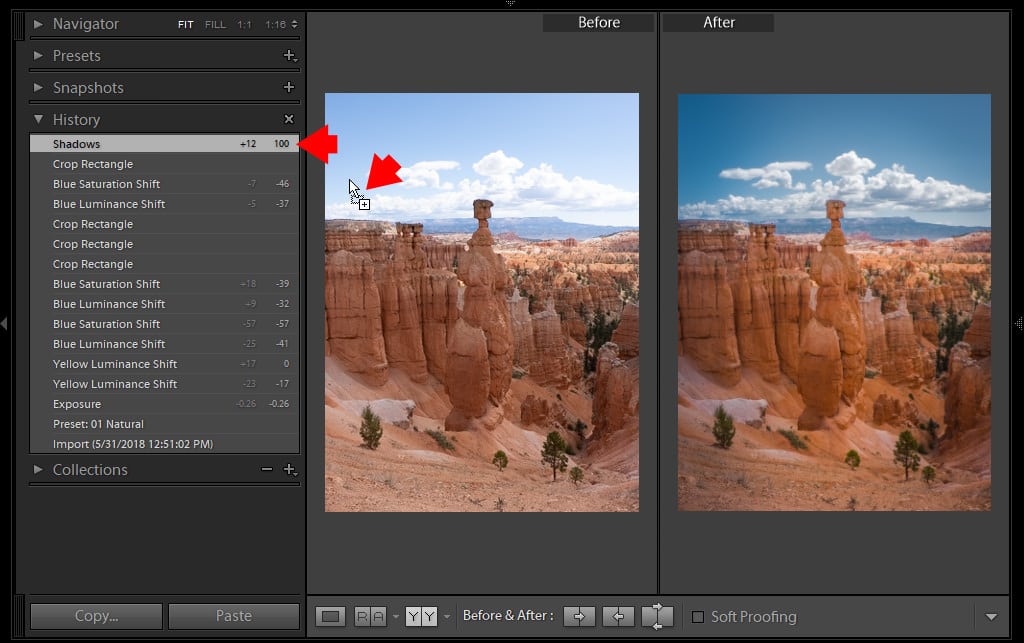

As soon as once more, I’m not positive how helpful this function is, however you may have the choice in case you ever want it.
7. Utilizing Digital Copy to Show Earlier than and After
The Digital Copy perform in Lightroom lets you create cases of edited images with out duplicating the unique picture. You may apply completely different enhancing choices to every Digital Copy to separate the varied enhancing variations.
Ctrl + ‘ (apostrophe)(Cmd + ‘) – to create a Digital Copy of the chosen picture.
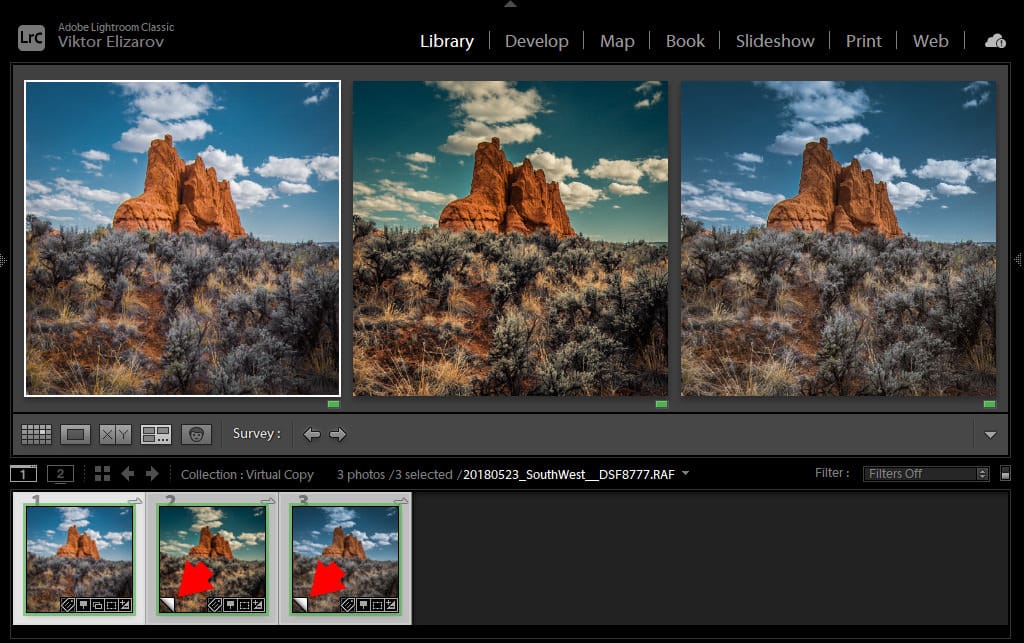

Utilizing the Earlier than and After choice with Digital Copies is just like how I exploit Snapshots. As a substitute of utilizing Snapshots, you merely use Digital Copies to trace your enhancing steps.
Lightroom Earlier than and After Shortcuts
“” – replaces the present enhancing state with the unique unedited model.
Shift + Tag, “” – a mixture of shortcuts hides all of the panels first.
“Y” – shows Earlier than & After Facet by Facet.
“Shift” + “Y” – shows Earlier than & After Left/Proper Break up.
“Alt”+”Y” – shows Earlier than & After High/Backside
“Alt”+”Y” and “Shift + Y” – shows Earlier than & After High/Backside Break up
“Ctrl” + “Alt” + “Shift” + “Arrow Up” – Earlier than & Afte Swap View
Lightroom Earlier than and After | Remaining Ideas
As you may see, Lightroom gives a number of choices to show the earlier than and after states of the edited picture. However, you don’t have to memorize all of them. The aim is to search out essentially the most helpful choices to your particular workflow and to stay with them.
In my case, I nearly solely use choices #1 Earlier than Solely and #2 Earlier than and After with Snapshot Panel.
Articles Associated to “Lightroom Earlier than and After: 7 Methods to Visualize Your Edits“
[ad_2]